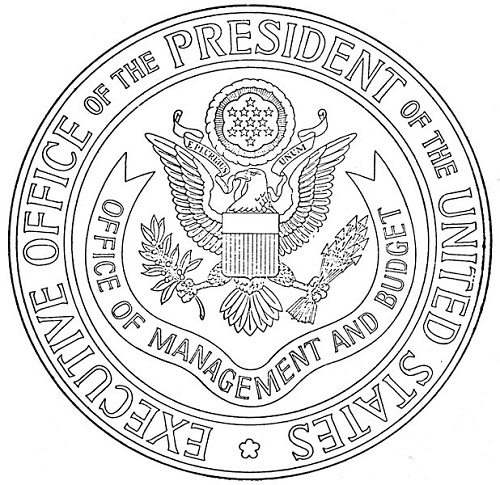
Mark December 26th on your calendars. If you subscribe to the Federal Register, that’s when Santa will deliver the issue in which you’ll see the official version of the Office of Management and Budget’s changes for federal agencies’ interactions with contractors and vendors on federal grants and contracts. The OMB guidance, which can be seen here, supersedes and hopefully streamlines the rules in OMB Circulars A-21, A-50, A-87, A-102, A-89, A-110, A-122, and A-133.
Yes, OMB circulars and guidance sure make for riveting reading, don’t they? But they are important for the thousands of nonprofits that are working on federal grants and contracts. It’s hard to imagine nonprofits that work on federal projects not being familiar with and beholden to A-110, A-122, and A-133 in particular, for their strictures on overhead rates and audit requirements.
That means that this new announcement from the Office of Management and Budget should be core bedtime reading for nonprofits with current or prospective federal grants or contracts. For nonprofits, the new OMB guidelines reflect the continuing pressure that nonprofit advocacy organizations, in this case epitomized by the National Council of Nonprofits, have put on the federal government to remove impediments that make life difficult for nonprofit grantees and contractors.
The Council summarized the key points of the new OMB guidance as follows:
Sign up for our free newsletters
Subscribe to NPQ's newsletters to have our top stories delivered directly to your inbox.
By signing up, you agree to our privacy policy and terms of use, and to receive messages from NPQ and our partners.
- Indirect Costs: The OMB Guidance explicitly requires pass-through entities (typically states and local governments receiving federal funding) to either honor a nonprofit’s negotiated indirect cost rate if one already exists or negotiate a rate in accordance with federal guidelines. Nonprofits will be empowered to elect an automatic indirect cost rate of 10 percent of modified total direct costs (MTDC), which can be used indefinitely if they so choose, or negotiate a higher rate.
- Direct Costs: The guidance makes clear that, in certain circumstances, program administration (e.g., secretarial staff dedicated to a specific program) can be reported as direct, rather than as indirect, costs.
- Audit Rules: The new guidance also raises the threshold for a single audit (A-133) requirement from $500,000 to $750,000, thus reducing costs for smaller contracts and grants.
- Streamlining Federal Guidance: The new guidance consolidates and streamlines eight OMB circulars, including OMB Circulars 110 and 122 that relate to charitable nonprofits. As a result, applications and reporting will be standardized and streamlined to provide more consistency across various federal agencies.
The importance of these new rules is, to us, the provisions on indirect and direct costs. The requirement that pass-through entities comply with nonprofits’ already negotiated indirect cost rates or, if none exist, to negotiate them is probably the highlight of the changes. As the reports on nonprofit/government relations produced by the National Council on Nonprofits and the Urban Institute have shown, the behavior of many pass-through entities administering federal grants has been inconsistent at best from state to state. Some states will give nonprofit vendors a real overhead rate, others will set the rates at arbitrary numbers, and some pass-through entities have retained the entire overhead costs for themselves and given the nonprofit vendors nothing. We suspect that as troublesome as federal indirect cost rates have been, the inconsistencies among pass-through entities have been even more difficult for nonprofits.
The item on direct costs is important as well. Too often, federal agencies have relegated some nonprofit costs to the indirect pool, as opposed to recognizing that in some cases, program administration costs could and should be treated as direct costs. In addition to low indirect costs, the exclusion of some costs from direct—i.e., billable—cost categories has meant that nonprofit contractors have had to carry more of the cost of program delivery through inadequate indirect rates than they should have. The streamlining of the circulars should help overcome, at least at the federal level, the agency-to-agency differences that have befuddled so many nonprofit contractors as well.
Going forward, however, these new guidelines aren’t the end of the challenge. We see several upcoming items on the nonprofit sector agenda:
- The first challenge is simply working on how the federal agencies will interpret the new rules. The federal infrastructure for administering and interpreting these rules has been diminished over the years, a process that took off during the administration of George W. Bush, so many of the people inside the agencies aren’t necessarily strong on implementation. In some agencies, privatization has led to outsourcing some contract negotiation functions, ill-serving both government and nonprofits. (We referenced this problem in our analysis of past presidential budget proposals concerning the USAID budget’s reduction in program staff leading to more confusion and cost, rather than less). Nonprofits have to educate these policymakers and contract negotiators about the realities of “doing.”
- Second, a lot of the nonprofit contracting that occurs through the federal level goes to big nonprofits such as universities. For example, in the OMB document, there are 81 references to IHEs, which stands for “institutions of higher education,” many of which live, eat, and breathe federal contracts. Notwithstanding qualms about the accuracy of data reported by the USAspending.gov website, just plug in the name of any major university and see the dozens and dozens of grants and contracts that pop up. The big nonprofits are going to benefit from revised, streamlined OMB guidelines, but the nonprofit sector leadership has to make sure that the smaller nonprofits that lack the mammoth business development offices of major universities, hospitals, and research centers get protected as well.
- And third, as Tim Delaney of the National Council of Nonprofits repeatedly points out, the action is increasingly at the state government level. While the standardization and rationalization of federal indirect cost rules for state and local pass-throughs and subrecipients are important, these federal changes should be used to get states and localities to make their own grant and contact administration practices with their own money sensible and pragmatic. Otherwise, there will be a two-tiered system: a somewhat more rational one that we hope will emerge at the federal level as a result of these new rules, and a much less rational, much more confused system that operates in state capitals with the administration of states’ own expenditures.
Here’s the real victory in this OMB announcement. As a result of the National Council of Nonprofits and others, the voice of nonprofits is starting to be heard on bread-and-butter issues that count in the provision of more and better services to people in need. This is a step, but there’s so much more to be done.











